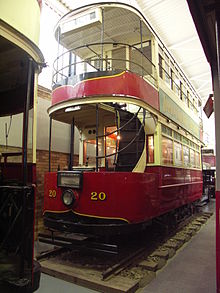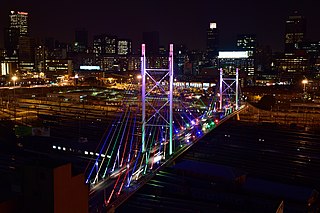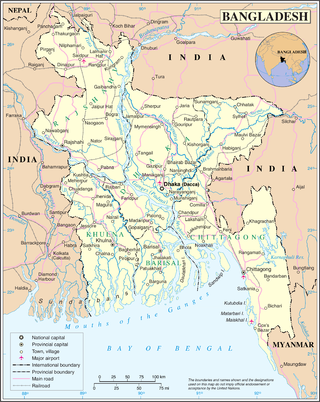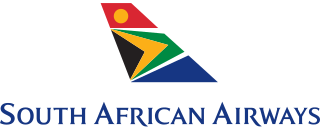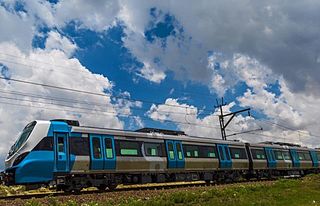Roads
Road network and freeways
Apartheid led to a massive expansion of South Africa's road and bus systems to transport black workers from bantustans they had been forcibly removed to from to urban areas. As a result of the severe wealth inequality under apartheid, the apartheid government heavily subsidised bus systems at the rate of $1,000 per commuter. For bantustans such as KwaNdebele, the apartheid regime provided a higher bus subsidy than their gross domestic product. [2]
The national speed limit is 60 km/h in residential areas and 120 km/h on national roads, freeways, and motorways.

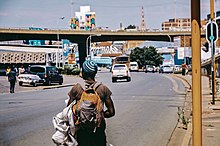
In 2002, South Africa had 362,099km of highways and 73,506km of paved (including 239km of expressways). [3]
The term freeway in South Africa differs from most other parts of the world. A freeway is a road where certain restrictions apply. [4] The following are forbidden from using a freeway:
- a vehicle drawn by an animal;
- a pedal cycle (such as a bicycle);
- a motor cycle having an engine with a cylinder capacity not exceeding 50 cm3 or that is propelled by electrical power;
- a motor tricycle or motor quadrucycle;
- pedestrians
Drivers may not use hand signals on a freeway (except in emergencies), and the minimum speed on a freeway is 60 km/h (37 mph). Drivers in the rightmost lane of multi-carriageway freeways must move to the left if a faster vehicle approaches from behind to overtake.
Despite the popular opinion that "freeway" means a road with at least two carriageways, single-carriageway freeways exist. [5] The Afrikaans translation of freeway is snelweg (literally fast road or expressway).
Minibus Taxis
Minibus Taxis are the predominant form of transport for people in urban areas of South Africa. [6] This is due to their availability and affordability to the public. [7] Most minibus taxis are not subsidised by the state and the taxi industry is notorious for using vehicles that are not well maintained. [8] Because many taxi owners own just a few taxis and each owner may choose to manage their business differently, there is not much known as to the inner workings of the industry. Since 1994, there have been efforts to formalise the industry, but as taxi organisations often don't abide by labour regulations, relationships between taxi operators and the state are often strained.
In 2021, there were 349,671 registered minibuses. [9] In 2021, there were 73,953 unroadworthy or unlicensed minibuses. [9]

Cape Town and MyCiTi IRT
The City of Cape Town has clarified that developing public transportation is a priority to achieve its long-term developmental goals. As such, the city has planned the development of an Integrated Rapid Transit (IRT) system called "MyCiTi IRT". In 2007, the construction of this system began with the implementation of Cape Town's "Bus Rapid Transit" system. This first phase has been designed to enable easy integration of other forms of public transport – ranging from cycling to South Africa's famous minibuses in later stages of the IRT development [10] – including rail transit, seen currently as "the backbone of public transportation in Cape Town." [11]
Road transport safety
South Africa's road traffic system might be less effective than most industrial countries, but it is not worse than other African nations. South Africa has an institutional framework for road safety led by the Road Traffic Management Corporation. South African laws follow global best practices, including speed limits, drink-driving, motorcycle helmets, seat-belts, child restraints, and mobile phone use. [12]
South Africa counts 26 deaths each year for 100,000 people (260 per million), a higher rate than the global average of 18 per 100,000 (180 per million). [12]
In 2021, the country recorded 12,541 road fatalities for 11,726,476 vehicles (7.6 million motor vehicles and over 2.6 million light delivery vehicles/bakkies). [13] with "motor vehicle" including vehicles such as motorcycles and motor tricycles.
People killed in road accidents are mostly pedestrians with a percentage of 37.6%. Passengers suffer 32% of fatalities and drivers 27%. [14]
58% of road deaths are attributed to alcohol use, which makes alcohol a leading factor in such fatalities. [12] South Africa had the highest number of drunk driving incidents among a WHO survey [14] (see Driving under the influence)
Pedestrians may be affected by a 60 km/h posted speed limit in residential and urban areas, a speed so excessive that it reduces pedestrians' chance of survival. [14]
According to some sources, 31% of South African drivers wear seatbelts, [12] while other sources claim a 45 to 60% compliance rate for drivers. [14]
Vehicle maintenance issues cause 9% of road accidents, including tyres, brakes, and lights issues. [14] When vehicle safety is involved, tyres are the first issue in 41% of vehicle factors. [9]
When a crash is considered major, the crash type is often a head-on collision (44%), multi-vehicle (16%) or a T-Bone collision (15%). [9]
